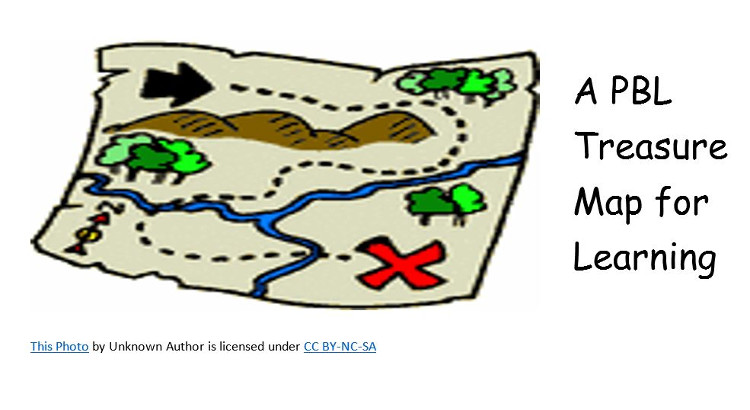Part 2: Ten Reasons for Mapping Out PBL… Scaffolds That Makes Project Based Learning Work


In this post I will share both why mapping in PBL is so important and several template ideas you can use based on the scaffold process I have described in the prior post. I sometimes feel that having a map is the difference between doing a project and doing a PBL Creating a map is the front-loading often described when designing PBL Note that not every lesson or activity needs to be designed or completed. All the map needs are the titles of these learning activities. Once a map is created the products, lessons, and assessments are transferred to a calendar. Educators often ask why they should create a map. I thought I would provide ten reasons below.
Ten Reason for creating a scaffold or map for PBL
- Provides the teacher the needed intentional organization to make the PBL happen by providing the students and teachers a road map and sense of direction as they go through the project.
- Allows teachers to bring transformative and traditional methods together.
- Ensures that the standards are facilitated and assessed through the project.
- Facilitates individual assessment in and outside the group.
- Allows for proper alignment from the beginning question to the final project answer and assessment.
- Provides needed benchmarks for learning opportunities and assessments.
- Facilitates the movement of the project in a proper and productive timeline providing students and teachers a sense of direction and purpose.
- Encourages teachers with the idea of using prior successful lessons honoring past practice and time spent developing such learning opportunities.
- Allows teachers to vet a project ensuring lessons and learning activities contain all steps of Blooms Taxonomy and much of Webb’s Depth of learning, along with the 4 C’s (Critical Thinking, Collaboration, Communication, and Creativity).
- Allows teachers to use a collaborative document that can be used in both group planning and sharing with others.
I have included a link to a mapping form that I have developed that you can even turn into a Google Form to collaboratively design a PBL with other educators. You might also want to investigate a powerful template provided at the BUCK Institute (BIE) with the provided link below. Refer to the third page of the BIE document.
[15 Ideas to Ensure That Project Based Learning is Grounded in Content And Standards]
Resources:
PBL_mapping_template_2018r_mjgormans – Feel free to use this form (Template) to plan and design a PBL unit. It follows the design technique referred to in the first post. Note that the small letters after the word (Lesson) ask you to vet the lessons in reference to Blooms: remembering, understanding, applying, analyzing, evaluating, and creating… (r…u…a…a…e…c). You should have a nice cross section of Blooms. In that same line you will find; Blocks ( A1234… B1234… C1234… D1234… E1234… F1234… G1234). This refers to the Block Indicators I have created to support PBL design. Read the entire series. Once again, the lessons should have a nice cross section of these. Remember that PBL must be built with lessons that allow students to have a diverse collection of learning activities.
PBL Road Map Form (Example) 2018 mjgormans – This file provides a look at what a project map may look like when filled out. This was part of a Rube Goldburg Project that I had done with middle school students.
Tools and ideas to transform education. Sign up below.
BIE (Buck Institute) – Learn from some of the various best research and planning resources from an organization that is a world leader in PBL I have learned so much from BIE and am honored to be a part of their national faculty. Take a look at their resource area for this template called the Student Learning Guide. As you look at page three you will see how this can be used to design a PBL At another link for resources you will find filled out template examples along with other design resources.
I do hope you have a better idea of what a PBL really looks like through the eyes of a designer. As you get better at PBL you will find that the front loading gets easier and you may increase or decrease the structure I have described. It is fun to watch the students take more and more of the ownership, but always remember that this takes careful facilitation on the sideline by the teacher. As you learn to map out PBL you will discover how it really provides a scaffold for all learners allowing for authentic learning that is based on the standards. Enjoy your trip on the PBL treasure map!
cross-posted at 21centuryedtech.wordpress.com
Michael Gorman oversees one-to-one laptop programs and digital professional development for Southwest Allen County Schools near Fort Wayne, Indiana. He is a consultant for Discovery Education, ISTE, My Big Campus, and November Learning and is on the National Faculty for The Buck Institute for Education. His awards include district Teacher of the Year, Indiana STEM Educator of the Year and Microsoft’s 365 Global Education Hero. Read more at 21centuryedtech.wordpress.com.
